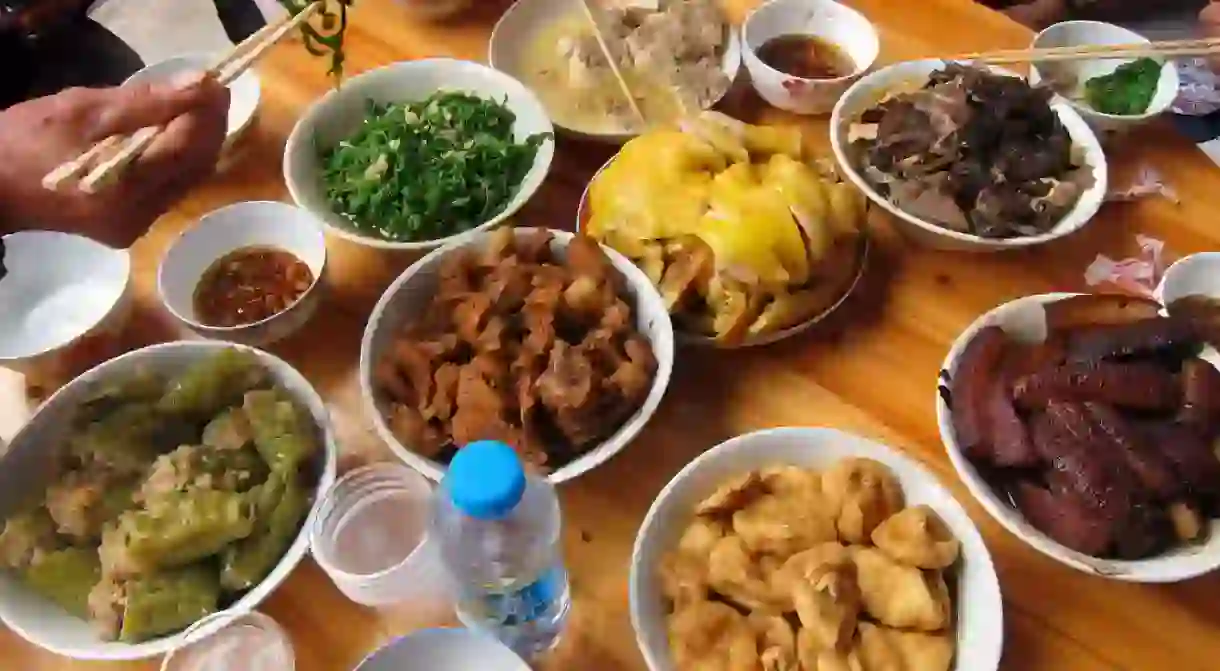An Introduction to Traditional Hakka Cuisine

The Hakka are a cultural group originating from China’s Central Plain. Today, they can be found in regions such as Hong Kong, Guangdong, Taiwan, Singapore, and Malaysia, among others. Traditional Hakka food is a rich part of the culinary heritage of southern China, although it tends to receive little attention compared to other Chinese cuisines. Here’s an introduction to Hakka food and some common Hakka dishes.
Hakka food is characterized as salty, fragrant, and umami. Rice, pork, tofu, and soy sauce are staples of the cuisine, while rice wine, ginger, garlic, and salt were used to preserve and flavor the food.
Historically, Hakka people often had to labor hard to live off the land. Because they needed a lot of energy to work in the fields, their meals tended to be hearty and heavy. Here are a few examples of classic Hakka dishes:
Stuffed tofu 釀豆腐
Cubes of braised tofu with a tasty filling of minced pork or shrimp. It’s said that when the Hakka migrated to China’s southeast, they found no flour with which to make dumplings, and turned instead to tofu. Some versions of this dish call for pan-frying or deep-frying, resulting in a golden-brown, crispy outer layer.

Yam abacus 算盤子
Chewy and irresistible, this dish is made from balls of mashed yam and tapioca, which are then topped with sauce, minced meats, mushrooms, and black fungus. The doughy balls resemble the beads of an abacus, an ancient counting tool — hence the dish’s unusual name.

Pork belly with preserved mustard greens 梅菜扣肉
Imagine thick, fatty slices of pork belly and chopped mustard greens, cooked together in a dark, sweet sauce containing soy sauce and sugar. The pork belly is first marinated in spices that give it an attractively glossy, reddish sheen. The mustard greens add a pungent, fragrant edge to this classic Hakka dish.

Pounded tea 擂茶
This aromatic drink is a Hakka staple. The exact recipe differs from household to household, but generally green tea leaves are added to a mixture of salt, ground mint leaves, toasted sesame seeds and nuts, and sometimes dried shrimp. The mixture is ground or pounded into a fine powder, then brewed into a drink. The result is a salty, minty, and herbal drink that’s fragrant and full of nutrition.

Poon choy 盆菜
The name poon choy means “basin dish,” a reference to the deep wooden basin in which it is traditionally served. This casserole-like dish consists of many layers of meats and vegetables. The bottom layer consists of common, cheap ingredients like radish and tofu, while the most rare and delicious ingredients, such as seafood, are reserved for the topmost layer. Poon choy is typically eaten during big festivals and special occasions, and is strongly associated with the traditional culture of Hong Kong’s walled villages.














